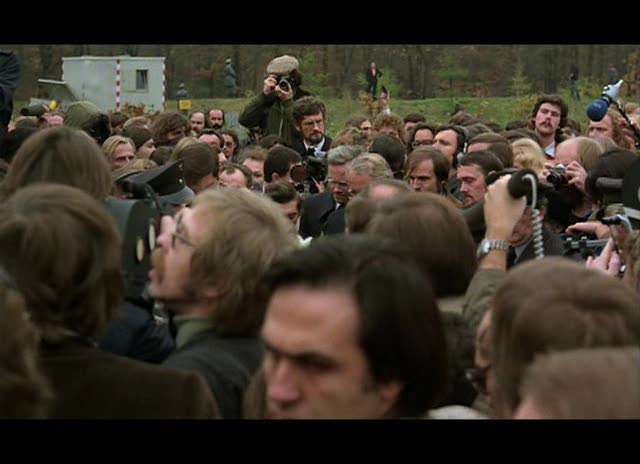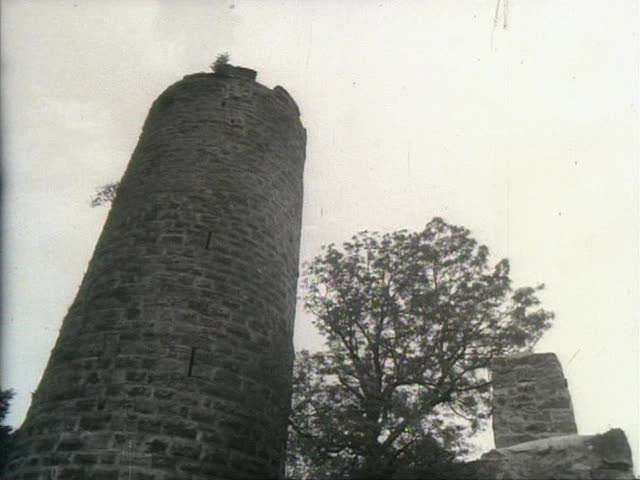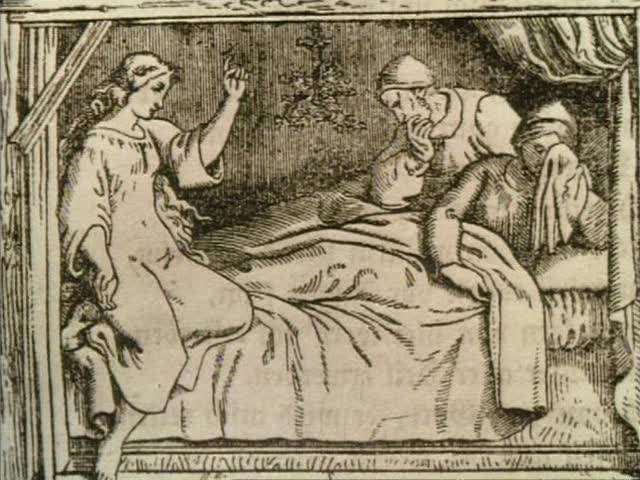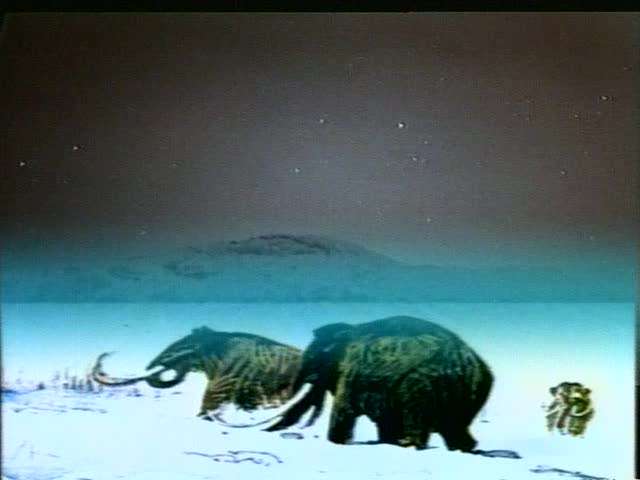----------------Faeton escribió:Deutschland im Herbst (Fassbinder & Kluge & Reitz & Schlöndorff & al., 1978)
1h58 min. - 1,35 GBIn 1960s and 70s Germany, as an entire generation of young people sought to orient themselves on different influences and models than their parents’ Nazi-influenced past, disenchantment and social unrest were prevalent. Despite denazification, ex-Nazis held powerful positions in government and business. Ninety-five percent of the Bundestag in the late 60s was controlled by a coalition of the SPD and CDU headed by former Nazi Party member Kurt Georg Kiesinger.
The police killing of a peaceful protester in the Summer of 1967 sparked the beginning of violent actions by radicals known as the Red Army Fraction (RAF). The RAF quickly became the biggest challenge the West German government ever faced, culminating in a series of high-profile kidnappings and murders in the Fall of 1977 that shook the underpinnings of German society and spawned a number of conspiracy theories and widespread anger at the government’s response.Germany in Autumn is a politically engaged combination of documentary, media footage, and fictional and autobiographical episodes that covers the emotional gamut from concern, to irony, to despair. A landmark film for the New German Cinema, this collaborative effort between nine acclaimed directors and several prominent writers, songwriters, and poets protests the political oppression of West Germany in the late 1970s. The film's nine vignettes document the rise of urban terrorism, police militancy, and the resurgence of fascist tendencies in postwar Germany.
In the fall of 1977, Germany was almost a nation under siege by its own police, security, and military forces. The headlines told of a plane hijacking and the kidnapping and subsequent murder of German industrialist Hans-Martin Schleyer. Schleyer's kidnappers, the Baader-Meinhof group, were a left-wing terrorist offshoot of the notorious Red Army Faction (RAF). Schleyer had been kidnapped in an effort to negotiate the release of the RAF's most prominent members, Andreas Baader, Gudrun Enslin, and Karl Raspe, who had been imprisoned for terrorist acts. After the failed kidnapping effort resulted in Schleyer's murder, the leaders of the RAF were found dead in Stammheim, a maximum security federal prison. The suspicious circumstances of their deaths led many to conclude that they were murdered by the state, although officials declared and still maintain otherwise. In any case, the treatment of the Baader-Meinhof group confirmed the fears of the political left that the state was willing to use extreme violence to silence its critics.
With these events as its historical backdrop, the film takes on three urgent tasks for the postwar generation: a protest against censorship and political repression; a confrontation with the persistence of fascism reflected in current events; and facing their parents' lack of accountability for the Nazi period. The films sections address these issues from various perspectives and diverse styles, and are marked by the signature styles of their directors. One sees the overall influence of Alexander Kluge, who together with Beate Mainka-Jellinghaus edited the nine hours of material into a 134 minute film.
As you can see in the pics, this movie mixes scenes in 1:33 and 1:66 without clear separation (ie.episodes). For this reason, you'll see the black bars in most of it.
Deutschland im Herbst (Fassbinder & Kluge & Reitz & Schl%C3%B6ndorff & al., 1978).avi
Deutschland im Herbst (Fassbinder & Kluge & Reitz & Schl%C3%B6ndorff & al., 1978) en,es,fr,ch,ru subs.rar
Wagnerian escribió:Subs españoles extraídos del subpack, formato .srt, para el ripeo de 'Deutschland im Herbst' realizado por Faeton, en opensubtitles:
http://www.opensubtitles.org/es/subtitl ... -herbst-es
Nachrichten von den Staufern (Alexander Kluge & Maximiliane Mainka, 1977)
22min - 333 MBThe film was produced in conjunction with a major exhibition on the Staufer family in Stuttgart. Kluge uses the material to postulate that, at all bad times throughout their thousand-year-old history, the Germans have always awaited a rescuer such as the waking Emperor Barbarossa on the Kyffhäuser.
Nachrichten von den Staufern (Alexander Kluge & Maximiliane Mainka, 1977).avi
Nachrichten von den Staufern (Alexander Kluge & Maximiliane Mainka, 1977) en,es,fr,ch,ru subs.rar
Neonröhren des Himmels (Alexander Kluge)
1min. - 15 MB
Neonr%C3%B6hren des Himmels (Alexander Kluge).avi
Código: Seleccionar todo
File Name .........................................: Deutschland im Herbst (Fassbinder & Kluge & Reitz & Schl�rff & al., 1978).avi File Size (in bytes) ............................: 1,467,867,136 bytes Runtime ............................................: 1:58:38 Video Codec ...................................: XviD ISO MPEG-4 Frame Size ......................................: 640x464 (AR: 1.379) FPS .................................................: 25.000 Video Bitrate ...................................: 1516 kb/s Bits per Pixel ...................................: 0.204 bpp B-VOP, N-VOP, QPel, GMC.............: [B-VOP], [], [], [] Audio Codec ...................................: 0x0055 MPEG-1 Layer 3 Sample Rate ...................................: 48000 Hz Audio Bitrate ...................................: 134 kb/s [2 channel(s)] VBR No. of audio streams .......................: 1 **************************************************************************************** File Name .........................................: Nachrichten von den Staufern (Alexander Kluge & Maximiliane Mainka, 1977).avi File Size (in bytes) ............................: 349,267,968 bytes Runtime ............................................: 21:50.000 Video Codec ...................................: XviD ISO MPEG-4 Frame Size ......................................: 640x480 (AR: 1.333) FPS .................................................: 25.000 Video Bitrate ...................................: 2001 kb/s Bits per Pixel ...................................: 0.261 bpp B-VOP, N-VOP, QPel, GMC.............: [B-VOP], [], [], [] Audio Codec ...................................: 0x0055 MPEG-1 Layer 3 Sample Rate ...................................: 48000 Hz Audio Bitrate ...................................: 133 kb/s [2 channel(s)] VBR No. of audio streams .......................: 1 **************************************************************************************** File Name .........................................: Neonr�n des Himmels (Alexander Kluge).avi File Size (in bytes) ............................: 15,718,400 bytes Runtime ............................................: 1:03.760 Video Codec ...................................: XviD ISO MPEG-4 Frame Size ......................................: 640x480 (AR: 1.333) FPS .................................................: 25.000 Video Bitrate ...................................: 1825 kb/s Bits per Pixel ...................................: 0.238 bpp B-VOP, N-VOP, QPel, GMC.............: [B-VOP], [], [], [] Audio Codec ...................................: 0x0055 MPEG-1 Layer 3 Sample Rate ...................................: 48000 Hz Audio Bitrate ...................................: 138 kb/s [2 channel(s)] VBR No. of audio streams .......................: 1
RIP ANTERIOR COMUNICADO POR TREP
This great movie was seeded by DarknessAtNoon@KG as a bigGERMANY IN AUTUMN
Directors: Rainer Werner Fassbinder, Volker Schlöndorff, Edgar Reitz, Alf Brustellin, Maximiliane Mainka, Katja Rupe/Hans Peter Closs, Bernhard Sinkel, Alexander Kluge
124 MIN. COLOR & B/W • 1978 • 35mm/video German w/English subtitles
SCREENPLAY: Heinrich Böll, Peter Steinbach & the directors
GERMANY IN AUTUMN is one of the landmark films of the New German Cinema. The film is a collaborative effort among Germany’s leading writers and directors in response to the climate of political terrorism prevalent in Germany during the late 1970’s. GERMANY IN AUTUMN skillfully weaves together the terrorist present and the Nazi past and transposes political history into family melodrama. The assemblage of documentary material, archival footage, and staged fiction give the film a richness of texture and sense of history. Fassbinder’s half hour segment is a highly charged confrontation between himself, his mother, and his male lover over politics and social responsibility.
"It’s sometimes startlingly beautiful... sometimes funny, and mostly disturbing, as it should be."
Vincent Canby, The New York Times
"The strongest filmmaking is a 30 minute sequence directed by and starring Fassbinder. Fassbinder is viciously probing the contradiction of personal and political, of fiction and non-fiction. This is the most compelling film he has made since "The Merchant of Four Seasons" and his sequence is sufficient reason to see the film."
Amy Taubin, Soho Weekly News
MPEG-1 constant bitrate file, so I could reencode it to CD size without much loss,
cutting the black bars and adjusting gamma and saturation in the meantime.
The quality is very watchable, and the movie is rare (the german DVD has no engsubs).
Germany in Autumn - Deutschland im Herbst - Fassbinder Kluge Reitz et al -VHSrip EnSubs.avi, 704Mb
video: 352x208 02:03:41 29.96fps DivX 650Kbps
audio: 44KHz 02:03:42 Stereo 132Kbps mp3
CAPS:














